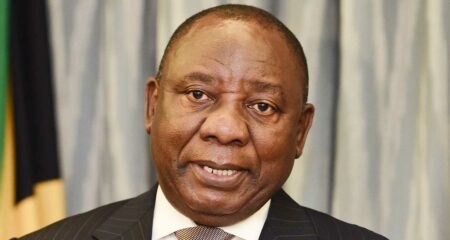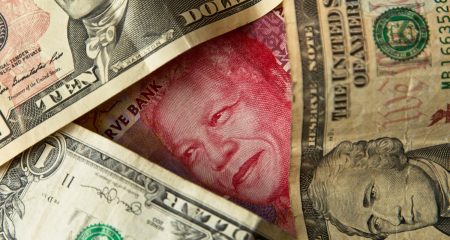 The rand slumped on Monday as investor concerns mounted over a power crisis that prompted President Cyril Ramaphosa to cancel a trip to the World Economic Forum in Davos.
The rand slumped on Monday as investor concerns mounted over a power crisis that prompted President Cyril Ramaphosa to cancel a trip to the World Economic Forum in Davos.
Eskom, the struggling state-owned power utility, last week ramped up power cuts to their worst-ever level, meaning most South Africans are without power for at least six hours a day and often more.
The rand traded at R17.08/US$ against the dollar at 2.30pm, about 1.4% weaker than its previous close. It earlier in the day hit its weakest since 13 December.
“What we’re seeing right now is potentially a realisation of the ramifications of where we are with Eskom and also a bit of unwinding in the USD-ZAR shorts that were on,” said Quinten Bertenshaw, executive director of ETM Analytics.
Recent strengthening in the rand had been a “dollar play”, he said, adding: “We haven’t broken any key technical levels as yet. I think the first big level that I would worry about that would signal a reversal for me, would be closer to the R17.20 mark.”
Eskom said on Tuesday it would implement stage-6 power cuts until further notice, as more of its generating units broke down. That requires up to 6GW to be shed from the national grid, versus Eskom’s 46GW nominal capacity.
Wichard Cilliers, chief dealer at TreasuryOne, said rand moves on Monday were exacerbated by thin liquidity due to US markets being closed.
Under pressure
“The rest of the emerging market space has also been under pressure but the rand is leading the way as load shedding and the cost to the economy is worrying investors,” he said, using a term for power outages.
Shaun Murison, senior market analyst at IG, said softer prices for South African exports were also weighing on the rand.
Read: Ramaphosa to skip Davos to attend to Eskom crisis
No major economic data releases are expected in South Africa on Monday. Later this week South African mining output and retail sales for November are due, as well as December consumer inflation.
Read: Eskom says minimising load shedding is its ‘highest priority’
The South African government’s benchmark 2030 bond was weaker, with the yield up 13 basis points to 9.895%. — Alexander Winning and Rachel Savage, (c) 2023 Reuters




